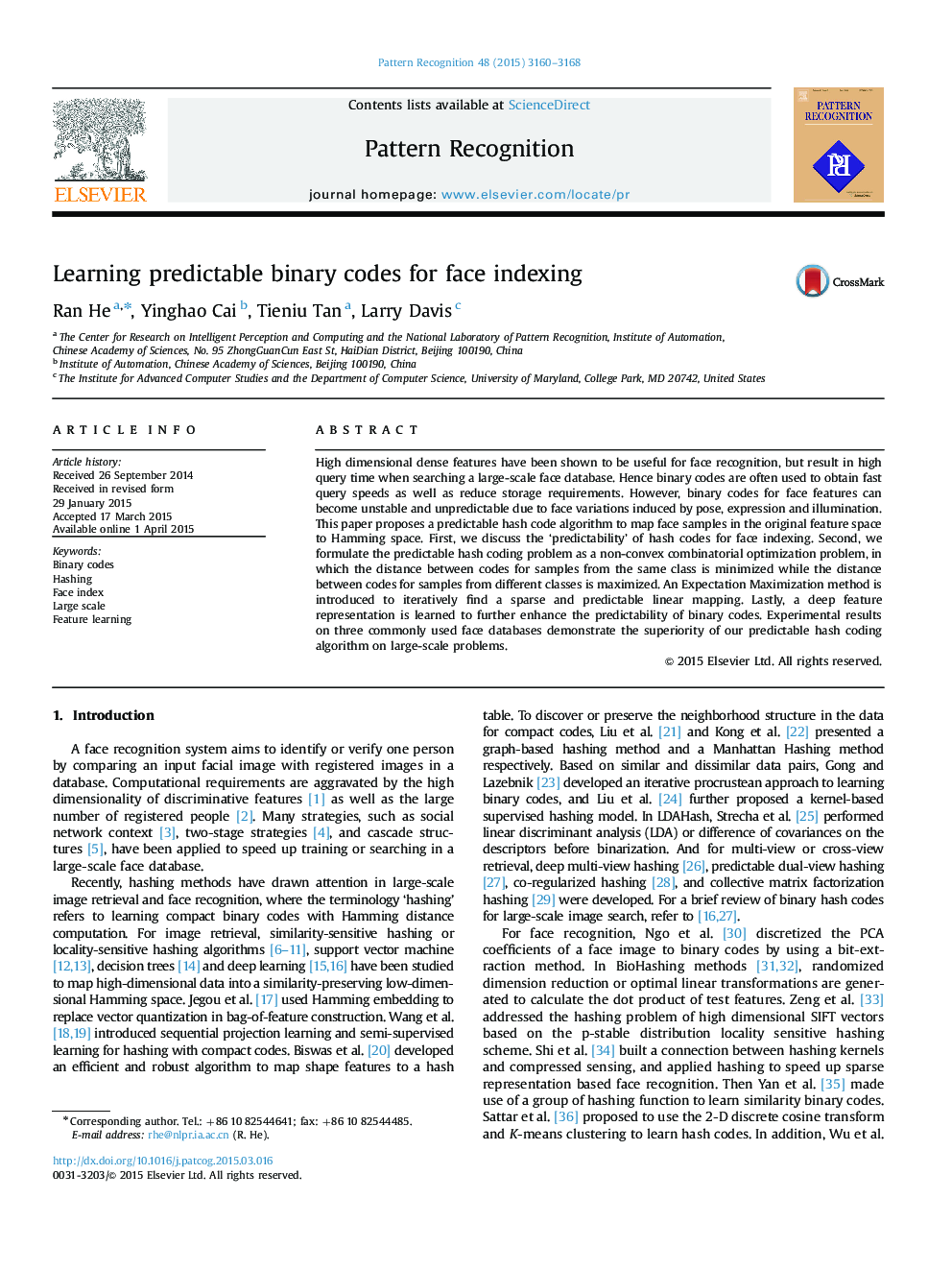| Article ID | Journal | Published Year | Pages | File Type |
|---|---|---|---|---|
| 533250 | Pattern Recognition | 2015 | 9 Pages |
•Discussing the ‘predictability’ of binary codes for face indexing.•A non-convex combinatorial optimization problem solved with EM method.•Applying CNN to learn a deep face representation.•Achieving state-of-the-art results on the YouTube Celebrities dataset.
High dimensional dense features have been shown to be useful for face recognition, but result in high query time when searching a large-scale face database. Hence binary codes are often used to obtain fast query speeds as well as reduce storage requirements. However, binary codes for face features can become unstable and unpredictable due to face variations induced by pose, expression and illumination. This paper proposes a predictable hash code algorithm to map face samples in the original feature space to Hamming space. First, we discuss the ‘predictability’ of hash codes for face indexing. Second, we formulate the predictable hash coding problem as a non-convex combinatorial optimization problem, in which the distance between codes for samples from the same class is minimized while the distance between codes for samples from different classes is maximized. An Expectation Maximization method is introduced to iteratively find a sparse and predictable linear mapping. Lastly, a deep feature representation is learned to further enhance the predictability of binary codes. Experimental results on three commonly used face databases demonstrate the superiority of our predictable hash coding algorithm on large-scale problems.
